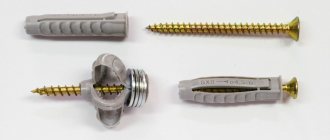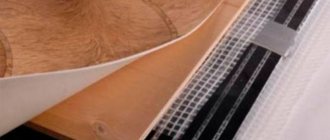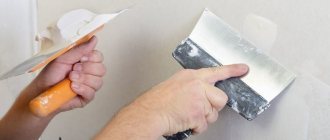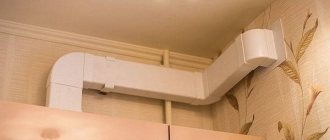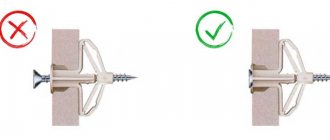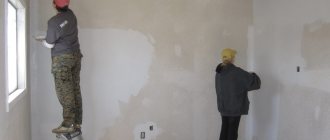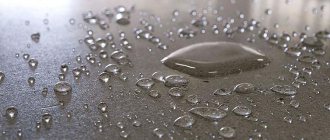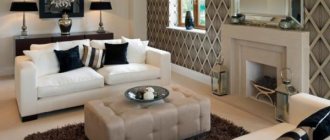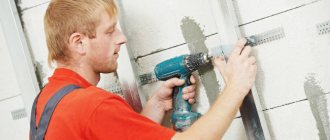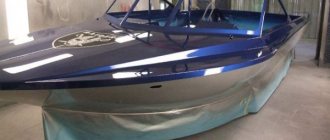In renovation work, drywall is often used as the main surface. Suspended ceilings, partitions, and walls are made from it. GCR has many advantages over other finishing materials. But there is one big disadvantage - fragility. To avoid this drawback, many enterprises produce fasteners - dowels for plasterboard structures. Thanks to such fastenings, you can hang a large picture on a gypsum board wall, a shelf, or a large picture.
Drywall dowels
There are different types of dowels to secure structures:
- Fischer dowel;
- Molly;
- "butterfly";
- Spring;
- Driva plastic or metal dowel;
- Dowel nail;
- KNAUF Hartmut.
To make the right decision, you need to study the catalog of the best dowels:
Device principle
The butterfly screw has a specific shape; when tightened, it is clamped. In this case, the dowel is attached to the back wall of the plasterboard sheet with special claws. Due to this, the area of the material increases, but not the pressure from the weight of the object that is suspended.
Simply put, this metal fastener distributes the load that is placed on the drywall.
This fastener has the following characteristics:
- It is fixed to a single or double layer of plasterboard;
- A screw is sold with self-tapping screws that match its length and thread, but is often used with other screws;
- On the dowel part, which is located inside the plasterboard sheet, there are ribbed elements; they prevent the fastener from rotating around its axis.
The thread also facilitates the folding of the element and its clamping, and the tabs on the head contribute to greater rigidity of the structure.
Types of dowels
Driva expansion dowel
Can be made of metal or plastic. This is a hollow rod with a screw thread. It is used even with a small distance between the sheet and the wall.
It is better if the kit includes a drill, this will simplify installation:
- Use a screwdriver to screw it into the sheet. But in this case, the plastic shank may become deformed;
- It is better to prepare a hole with a 6-8 mm drill;
- A screw is screwed into the cross-shaped slot in the dowel head, which pushes the element apart from the inside and ensures reliable fastening.
Made of metal, they can be from 3.3 to 4.4 cm long, they carry a load of up to 32 kg. Made of plastic - 2.3 cm and holds up to 25 kg. They can be dismantled without breaking the sheet.
Flaws:
general description
Drywall is widely used as a leveling material to create structures with various geometries. However, the material has a significant drawback - fragility. It is justified by the low strength of the gypsum core in conditions of damaged cardboard reinforcement. Because of this, difficulties may arise with fastening or hanging certain objects, equipment, and household appliances on thin sheets.
Traditional self-tapping screws are not suitable here due to the small contact area of the rod with gypsum board. Under load, it easily pushes through cardboard and plaster. The same happens when using long hardware, which will be additionally immersed in the rough base. The situation can be changed using special fasteners. Its action is aimed at compacting the area with the hole and increasing the contact area of the fastener relative to the core or reinforcing shell.
Regular dowel-nail Source zabor.bz
Dowel Molly
Most often it is made of galvanized steel. This protects the steel from rusting. Due to retractable metal strips, it can withstand one of the heaviest loads. To hang a lamp or chandelier, Molly is sold with a ring or hook. Supports weight up to 35 kg.
- Before installation, you need to make a hole in the sheet equal to the size of the sleeve;
- Drive the dowel closed;
- The screw does not need to be screwed in, it is pulled out with a special tool, and the metal petals open, like an umbrella, and the dowel is securely fixed in the hole.
Flaws:
- Molly cannot be installed if there is a small gap between the wall and the drywall;
- It is unlikely that you will want to buy a special tool to install one or two lamps;
- You can use pliers, but to do this you need to have the skill to carefully pull out the screw;
- The cost is significantly higher than that of plastic dowels.
Quick fastening with a pulley
The low cost and simplicity of design made the driva very popular. A drywall dowel with a thickness of at least 9 mm is used. With its help, it is good to fasten not very heavy elements. Sometimes it is called “snail”.
The fastening element has the following advantages:
- sparse and high threads allow the drive to be firmly fixed in the hole;
- low cost is achieved due to the simplicity of the design and the use of plastic in the manufacture of the drive;
- The dowel can be screwed into a plasterboard wall without preliminary preparation, thanks to the presence of a sharp tip.
Scheme for screwing in the dowel of the drive
The drive is screwed in using a regular shaped screwdriver. Then you will need to screw a self-tapping screw into the drive, passing it through the element attached to the wall. The self-tapping screw not only secures the structure, but it also pushes apart the pointed part of the tree. Under the pressure of the self-tapping screw, it diverges to the sides and plays the role of an additional support.
Butterfly dowel for drywall
The most common method of fastening light structures up to 20 kg. It is similar in design to Molly, but cheaper. Diameter can be 1; 0.8 and 0.4 cm. Length - from 1.2 to 26 cm. “Butterfly” is used when there is enough empty space behind the gypsum board, at least 3.5 cm.
Manufacturers also offer a metal version of this fastener. Of course, its price is higher than the plastic one, but it is the most durable and practical dowel, withstanding a load of up to 70 kg. The metal is treated with anti-corrosion agent.
- Drill a small hole to match the outer diameter of the dowel. It is better to hammer it in, because the fasteners must be installed tightly. In this case, you need to press the side “wing” elements;
- Holding the object to be fixed, screw in the self-tapping screw, making sure that the wings are pressed tightly on the other side of the sheet.
How to make the right choice
When choosing fasteners to mount in drywall, many factors are taken into account. This is the load that is planned, and the possibility of dismantling, if necessary, the cost is also not the last item on this list. This is a rather individual process and, in each specific case, the choice is different. But still, the most reliable method is fastening into load-bearing profiles, because, unlike a small dowel, the area over which the load is distributed in this case is tens, or even hundreds of times higher. Therefore, it is better to provide a profile in advance in the place where the fasteners are planned.
Knauf-Hartmut
Withstands the heaviest loads on drywall dowels. Allows you to attach massive structures up to 55 kg on two-layer walls, about 35 kg from one layer and up to 6 kg/linear meter when placed on the ceiling.
Installation:
- Prepare a hole with a diameter of 1.3 cm in the gypsum board;
- One of the guide elements must be shifted so that the anchor strip made of galvanized steel profile fits into the hole;
- Align the guide elements so that their ends are at the same level. The anchor bar is in working position;
- Insert the plastic locking sleeve all the way;
- Place the plastic strips to the sides and break off the excess. The anchor strip securely fixes the fastener in the hole;
- Screw the screw into the dowel.
A dowel nail is used when there is no void between the dry plaster and the main wall. Nails are used for through fastening of skirting boards, cornices, and door frames.
Most often it is made of plastic.
- The sizes of these dowels for drywall are from 4 to 14 cm. Diameter is 4-7 mm.
- When it is hammered into a hole, it wedges and does not scroll.
- The hat is made in the form of a mushroom or hidden. Removing the nail is impossible without destroying the dry plaster.
Nail
The dowel-nail is used for installation of plasterboard products that are light in weight and size. To install a dowel, insert it into the hole, then use a hammer to hammer it in.
A significant advantage of this fastening option is the small amount of time spent on its installation.
Fischer dowel
Made from fiberglass reinforced plastic. This two-component design allows you to carry a structure weighing up to 75 kg. It cannot be reused.
When installing this fastener, it is necessary to have a void margin of approximately 3 cm behind the wall covering.
- As with most dowels, you first need to drill a hole with a diameter of 12 mm;
- Install the dowel into a sheet of dry plaster by hand, turning it parallel to the corrugated strip;
- On the opposite side of the gypsum board, the dowel will automatically fit, providing strength to the fastening unit;
- Slide the white plastic sleeve into this hole so that it is flush with the plane of the sheet;
- Break off unnecessary pieces of strips;
- Screw the screw included in the kit with the dowel into the flexible groove made of metal plates.
Types of fasteners
Drywall screws are usually classified depending on different bases. To begin with, we suggest you understand how a plasterboard dowel can differ depending on the type of fastening:
- Classic. They are also called anchor ones. Characterized by durability and long service life. Can be used for fixing both metal and wooden profiles. A drywall anchor is a base into which you need to install a self-tapping screw. Their advantage is ideal grip, which is provided by notches of different sizes. As a result, it will be impossible to get them out. The disadvantage is the need to pre-drill holes in the wall. The disadvantages include the limited surfaces on which they can be installed. So, the wood will definitely begin to crumble when using them.
- Nails. They can withstand quite heavy loads, in certain cases hundreds of kilograms. This indicator depends on the size of the leg. The drywall dowel-nail is used directly for fastening to the frame. As in the case of anchors, it can be used for wooden and metal profiles.
- A butterfly is a combined product that has a plastic base that resembles a butterfly. This is where the screw should be screwed. When fixing the dowel into the drywall, the base is pressed tightly against the joint and provides good adhesion to the screw. A product such as a dowel for gypsum boards can be made from different materials. This is one of the grounds for classification. In this regard, it is customary to distinguish the following types:
Types of fasteners
When choosing between metal and plastic dowels, we advise you to give preference to the second type, because metal ones rust over time.
- Metal - made of zinc alloy. This significantly increases their cost, but guarantees a high load threshold.
- Plastic and nylon are modern types. Their main advantage is that they do not rust and are also lighter in weight. It is better to use them on lightweight structures.
Folding spring dowel
This is a screw with two toothed plates that are moved apart by a spring. They are produced in galvanized steel. Reusable.
The set includes a hook for hanging lamps and chandeliers. Installation is very simple:
- A dowel is installed in the finished hole, holding the blades so that they do not open;
- Having opened on the opposite side of the plasterboard, they will grab with two sharp teeth so that the rod does not rotate;
- Now you can tighten the self-tapping screw with a screwdriver.
You can buy any dowels in a store or market. Taking into account all the features of your case, you can choose the most successful option.
Features of a hollow block
This building material has some features. Due to the voids in the rooms, heat is perfectly retained. Using this brick in the construction of a residential building, it is possible to ensure a high level of thermal energy conservation in cold weather. In addition, hollow types of materials have good sound insulation. These types of bricks can withstand various climatic conditions.
The blocks can withstand 40-degree frosts without problems. Hollow brick has a good appearance. The modern market offers a lot of options for facing materials. Products are available in various colors and textures. When building with hollow bricks, there is no need to create deep foundations. This greatly simplifies the work process. This type of brick is much lighter than all other materials. Therefore, even the simplest foundation will support a building made from it. It is very profitable to buy this brick - its price is much lower than solid analogues. If you build from such a block, you can save up to 30% of money. Also, hollow blocks are inexpensive to transport, since their weight is significantly lower than their solid counterparts.
Photos of dowels for drywall
Tips and tricks from experienced builders
Recommendations on how to secure the dowel part in the wall correctly:
- Pre-clean the funnel where you will insert the self-tapping screw.
- The hole must be deeper than the length of the dowel.
- If the wall is fragile, before installation, wet the plastic part of the fastener with glue.
- If there are voids in the wall, it is advisable to use butterfly fasteners.
- It is advisable to drill the funnel at a slight angle, tilting the drill towards the floor.
- It is advisable to use new drills of the same diameter as the dowel.
- During installation, if complications arise, the fasteners are removed and a wire is used to check what prevents it from going deeper.
- Select fasteners according to the type of wall.
Previous post How to repair a laptop lid mount Next post Installing a hob
Conclusion
As you can see, the dowels for GGP slabs are quite standard. They are expandable, made mainly of nylon, and have antennae to enhance the expansion. This allows us to state that in addition to the dowels recommended by the Knauf company in their technological maps, similar dowels from other companies are suitable for PGP. For example, these.
©gipsokart.ru
More articles
- Weight of tongue-and-groove slab PGP
- Moisture-resistant tongue-and-groove slabs (GGP)
- Gas silicate block, what is it?
- What is gypsum tongue-and-groove board?
- Dowels for GGP slabs and blocks
- Sound insulation of GGP slabs
- Adhesive for tongue-and-groove slabs
- Materials for tongue-and-groove partition PGP
- Is it necessary to plaster tongue-and-groove slabs?
- Features of tongue-and-groove slab installation: elastic and monolithic connection
